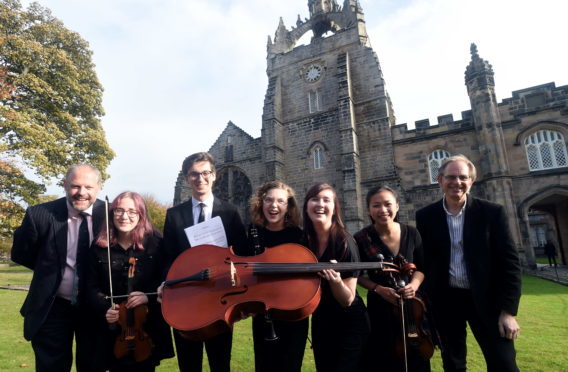A new piece of music will be played in unison by musicians across the world as a way of ensuring that the First World War continues to be remembered beyond its centenary.
Next month, people will gather to mark the 100 years since the end of the Great War.
The milestone anniversary is expected to contribute towards an increase in interest surrounding Remembrance Sunday, as millions fall silent for two minutes to remember those who died in the conflict.
But Aberdeen University lecturer, Neil McLennan, fears that the tradition could fade in the future.
And he has now partnered with Scottish fiddler Thoren Ferguson to create a “lasting form of remembrance”.
His idea is that musicians around the world will tune up their instruments at exactly the same moment following the conclusion of the two minutes of silence held each November 11.
Mr McLennan said: “It is important that we look at how we continue to reflect upon the war and think about peace.
“Once the centenary has passed, there is a danger than the First World War – the supposed ‘war to end all wars’ – begins to diminish in public consciousness.
“I asked whether a two-minute silence was enough and whether we needed to look at further ways to remember which can last for another 100 years.”
The senior lecturer at the university’s school of education believes that musicians of all nationalities joining together will show “how civilisation has progressed and become more unified”.
Mr Ferguson scored the new composition on the Wilfred Owen violin – an instrument endorsed by Unicef as “an envoy for peace and reconciliation through music.”
The technology needed for the musicians to link up will be trialled with performers in three different locations this year, with a larger collaboration planned for 2019 – a century after the Armistice.
Musicians from Shetland, Ypres, Germany, Australia and South Africa have all signed up to take part.
In Milan, it will be incorporated into the performance of an opera.
Mr McLennan added: “A community of musicians has quickly grown and a piece that was first written for fiddle has been transposed for all sorts of different instruments.
“2018 is just the beginning, and there is still plenty of time for anyone else wishing to join us to get involved.
“We hope that this is just the start of a journey towards a new remembrance which could last another 100 years.”
Musicians of all ages and abilities are invited to join the global orchestra using social media platforms and the hashtags #iPlay4Peace, #ArmisticeConcert and #Concert4Cooperation
